
Epithelial Tissue
Lecturer: Dr.Firdous M. Jaafar
Department of Anatomy/Histology section
Lecture 3

Objectives
• 1- Define glandular epithelia, and describe its types.
• a- Describe serous cells.
• b- Describe mucus- secreting cells.
• c- Describe steroid- secreting cells.
• d- Describe myoepithelial cells.
• 2- Describe the specialization of epithelial cells:
• a- Identify the cells that transport ions.
• b- Identify the cells that transport by pinocytosis.
• 3- Study some medical applications related to epithelial tissue.


Glandular Epithelia
are formed by cells specialized to produce secretion which is generally stored
in the cells in small membrane-bound vesicles called secretory granules.
They can secrete protein, lipid, or carbohydrates.
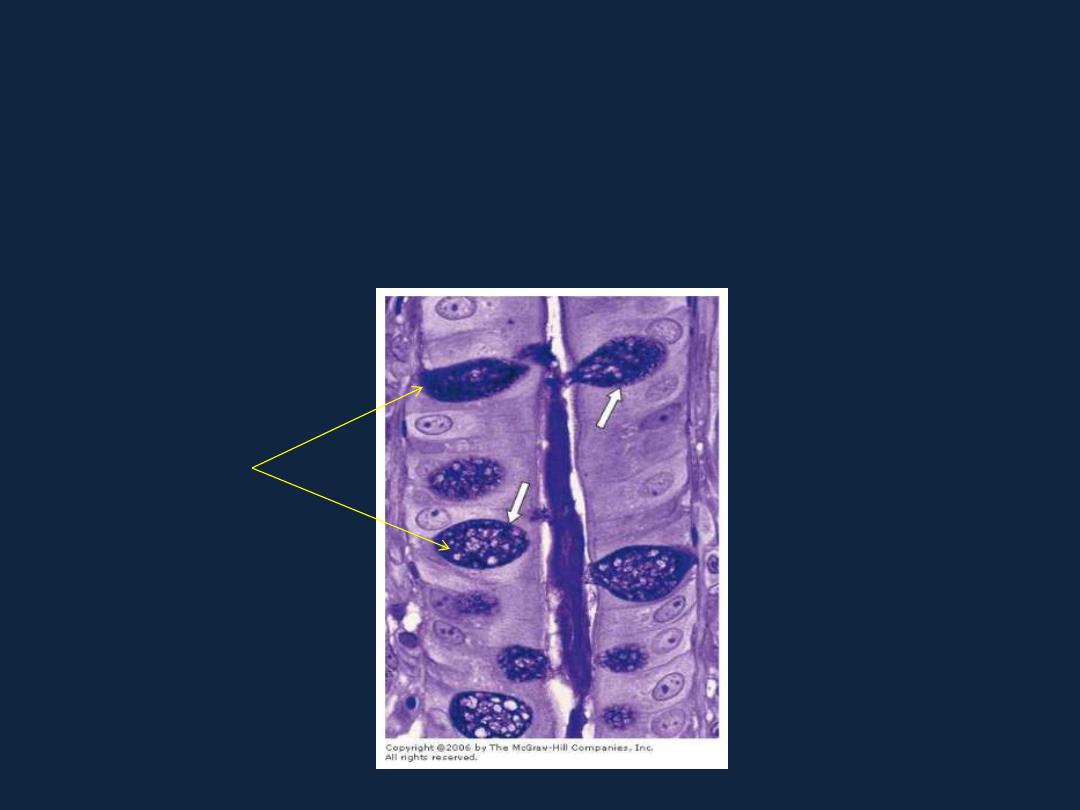
Types of Glandular Epithelia
• 1- Unicellular gland: consist of isolated glandular cells, as the goblet cell of
the lining of the small intestine, or of the respiratory tract.
goblet cell

Types of Glandular Epithelia
• 2- multicellular glands: are composed of clusters of cells, where the
epithelial cells aggregates to form a more complex structure; gland, such as
salivary glands, and pancreas.
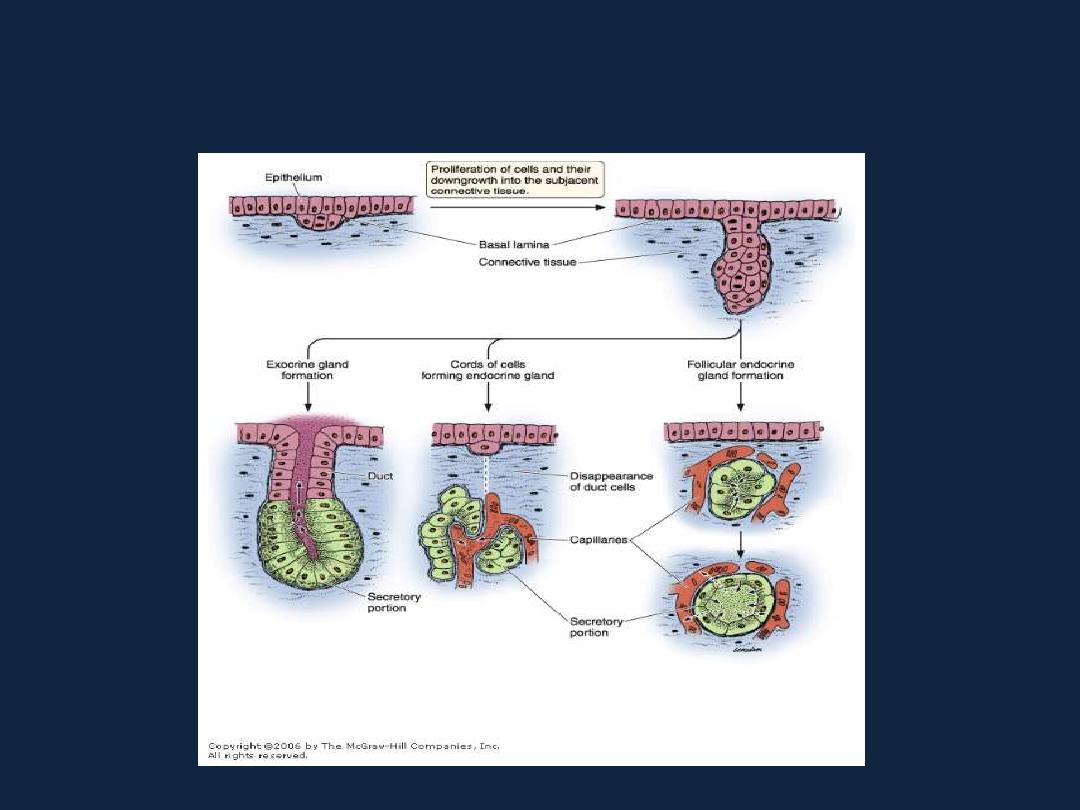
Formation of glands

Types of Glandular Epithelia
1- Exocrine gland: where the secretion is transported
to the outside surface through tubular ducts.
2- Endocrine gland: where the secretion is
transported by blood stream, because it has no ducts,
so there is no connection to the outside surface.

Endocrine gland
• Two types of endocrine glands can be recognized based on the arrangement
of their cells:
• 1- The endocrine cells may form anastomosing cords
interspersed between dilated blood capillaries
(eg, adrenal gland, parathyroid,
anterior lobe of the pituitary).
• 2-The endocrine cells may arrange themselves
as vesicles or follicles filled with noncellular
material (eg, the thyroid gland).

Exocrine gland
• Composed of two parts:
1- Secretory portion.
2- Duct.
Glands are classified
according to their ducts
into:
1- Simple glands: have only one unbranched duct.
2- Compound glands: have ducts that branch repeatedly.
Glands are classified
according to cellular organization of the secretory portion
1- Simple;
tubular, coiled tubular, branched tubular.
2- Compound;
tubular, acinar, or tubuloacinar.
Glands are classified
according to how the secretory products leave the cell:
1- merocrine glands.
2- holocrine glands.
3- apocrine glands.
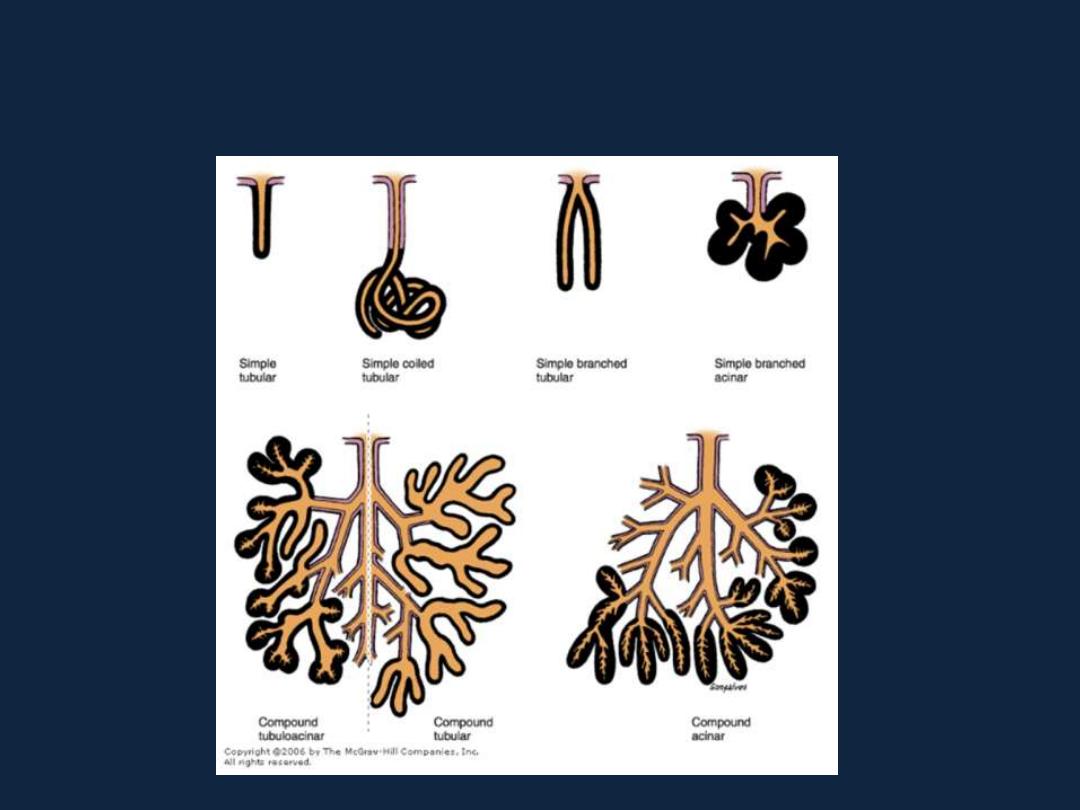
Exocrine gland

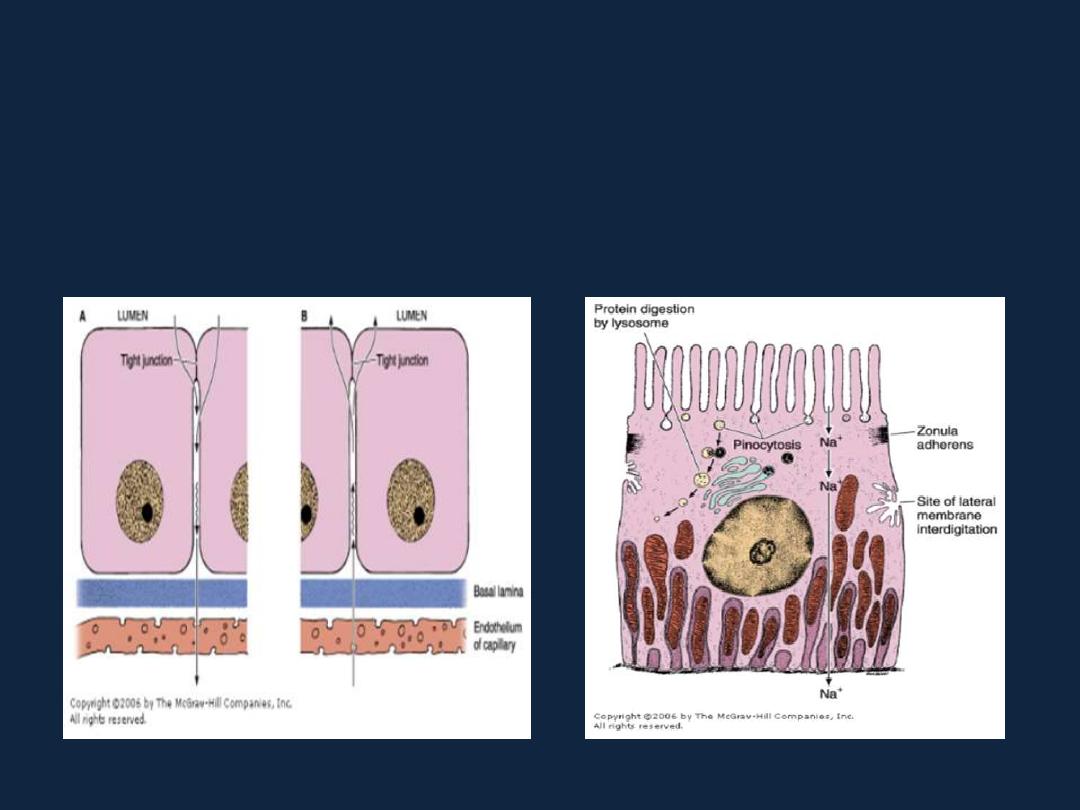
Specialization of epithelial cells
• Cells That Transport Ions: cells have the ability to transport certain ions by
active transport.
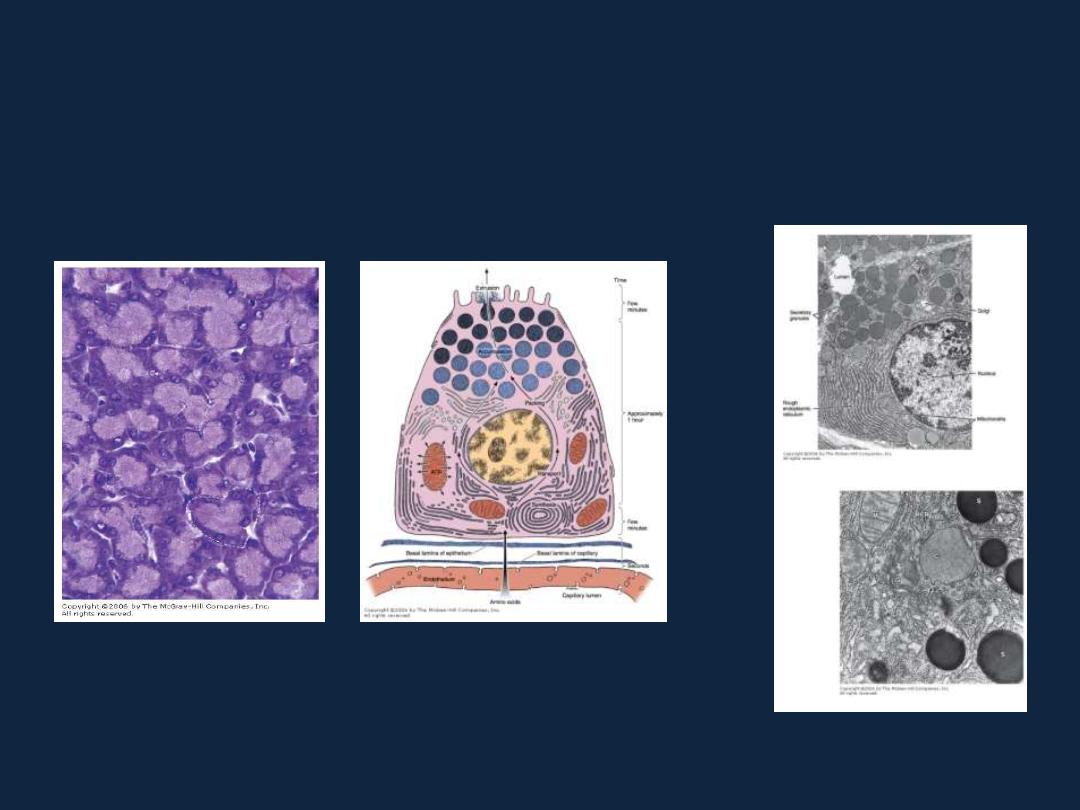
Specialization of epithelial cells
• Serous Cells: as in pancreas and parotid salivary gland.
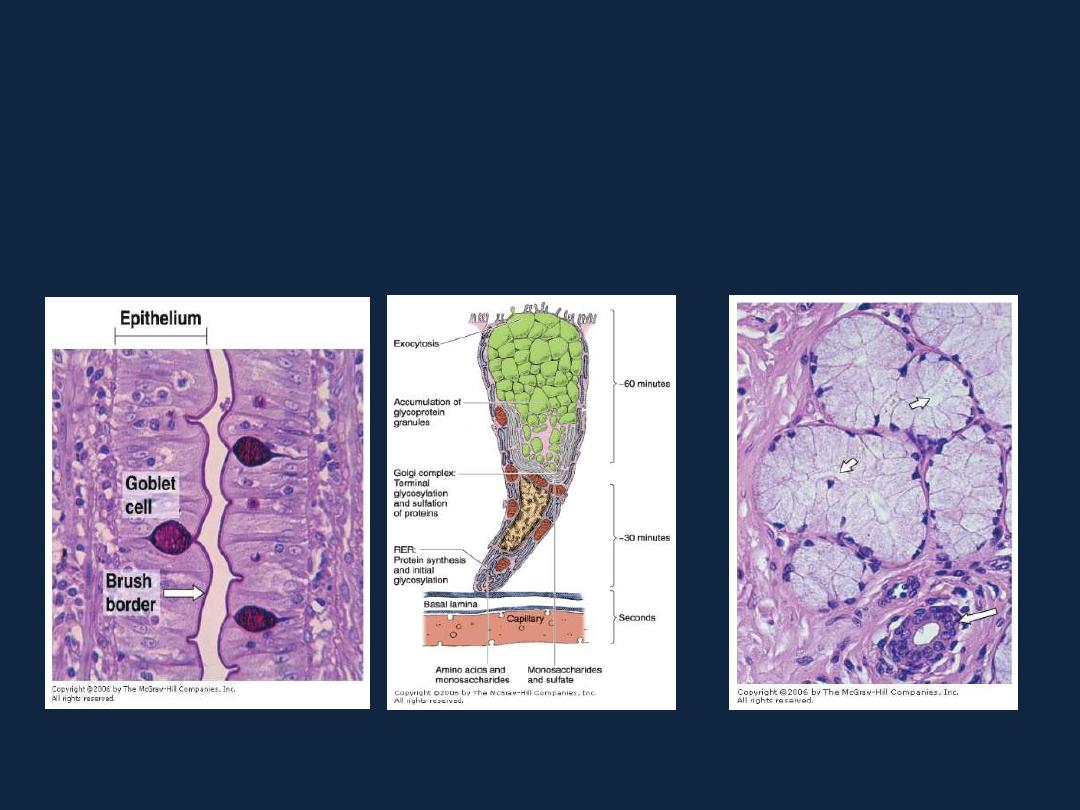
Specialization of epithelial cells
• Mucus-Secreting Cells: as goblet cells of intestine, acinar cells of salivary
glands.
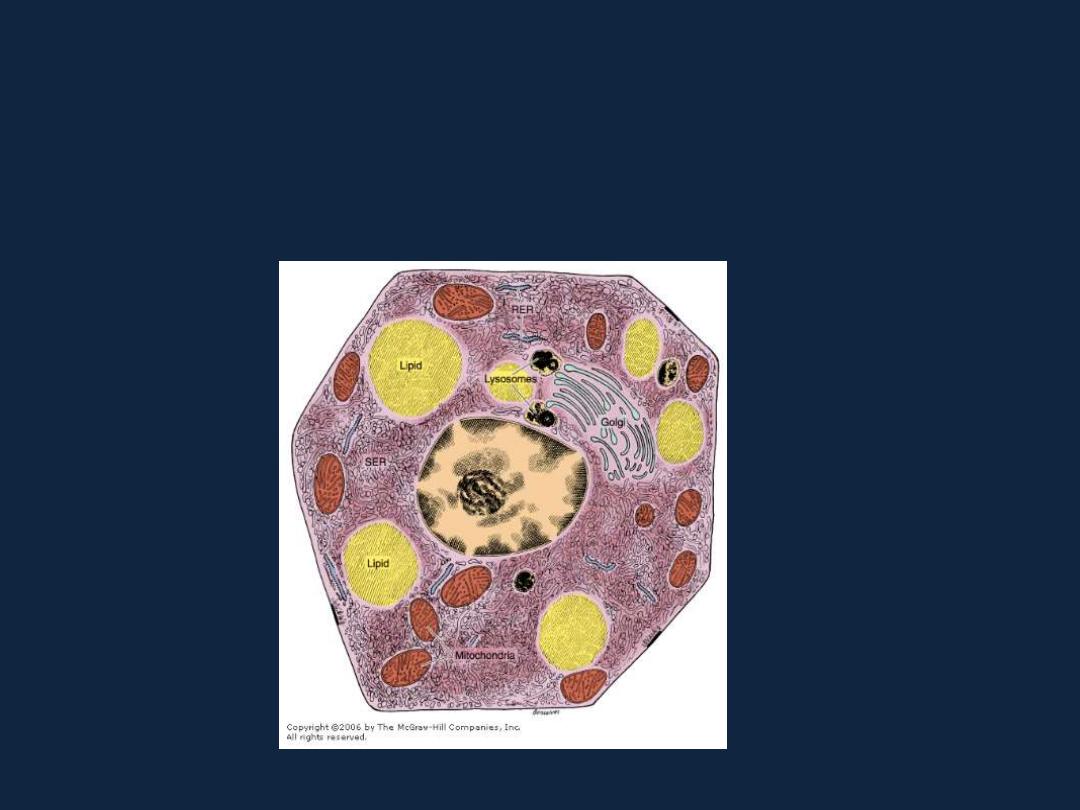
Specialization of epithelial cells
• Steroid-Secreting Cells: as in testes, ovaries, adrenals.
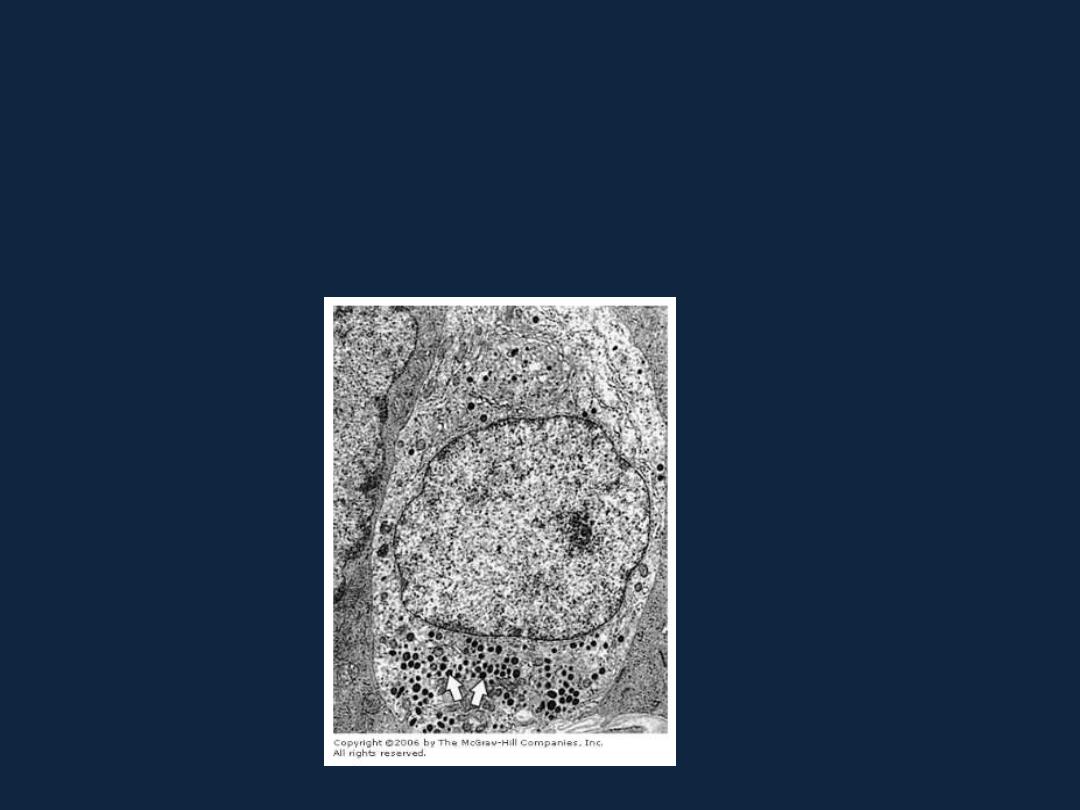
Specialization of epithelial cells
• The Diffuse Neuroendocrine System (DNES): they are endocrine cells
interspersed among nonendocrine cells.
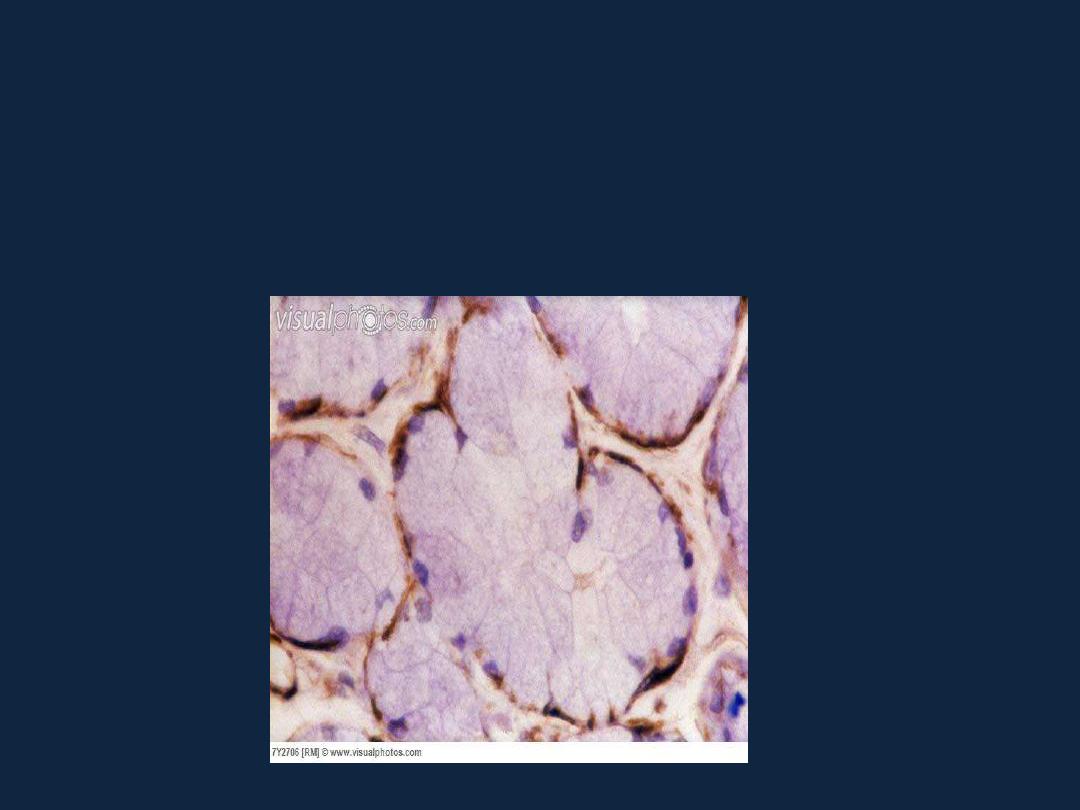
Specialization of epithelial cells
• Myoepithelial Cells: These cells embrace gland acini as in sweat,
lachrymal, salivary, mammary glands.


Medical application
• Metaplasia
: Under certain abnormal conditions, one type of epithelial tissue
may undergo transformation into another type.
In heavy cigarette smokers, the ciliated pseudostratified epithelium lining
the bronchi can be transformed into stratified squamous epithelium.
In individuals with chronic vitamin A deficiency, epithelial tissues of the
type found in the bronchi and urinary bladder are gradually replaced by
stratified squamous epithelium.
Apudomas:
tumors derived from polypeptide-secreting cells of the DNES.
Tumors :
either benign or malignant.
